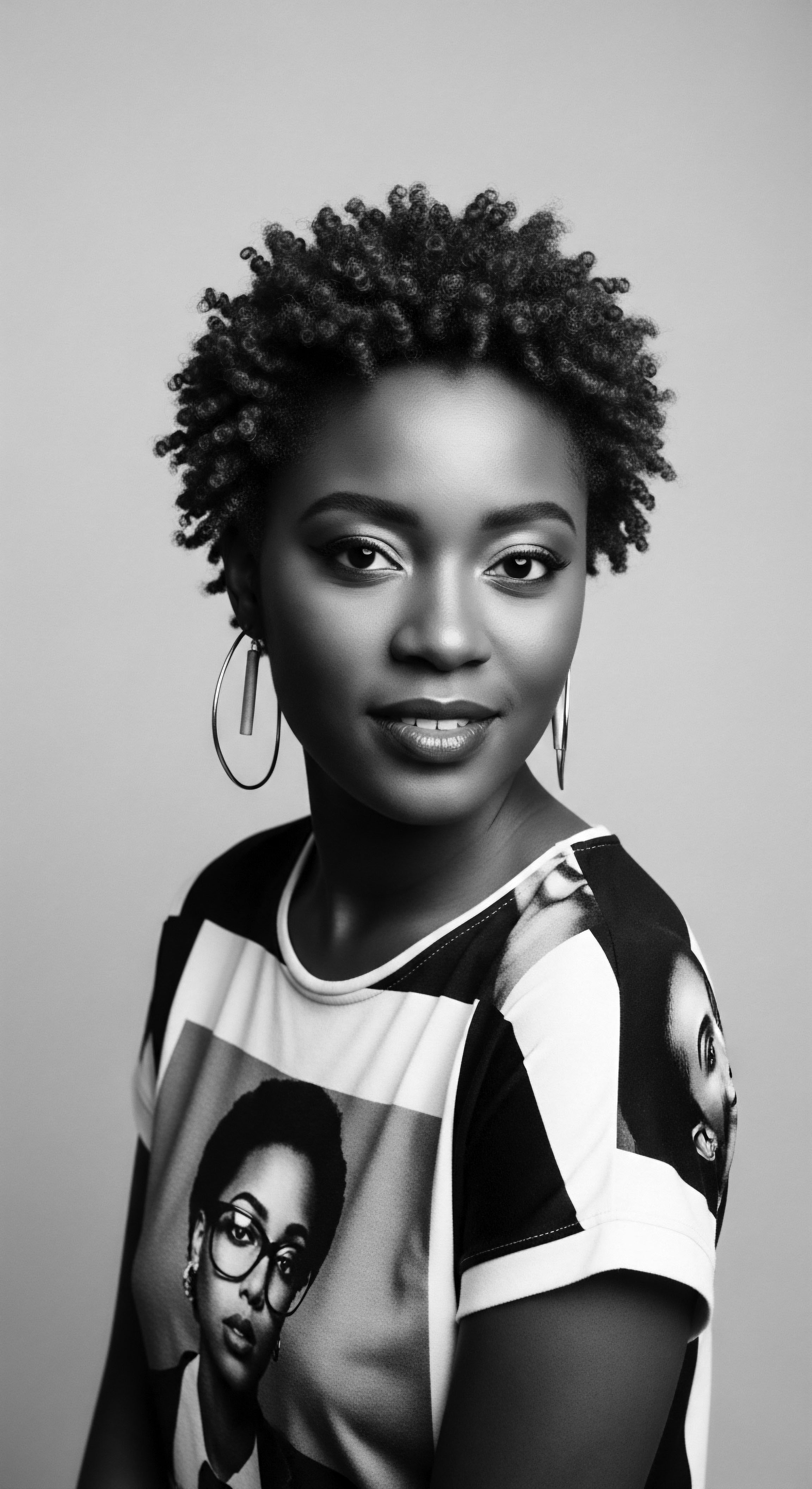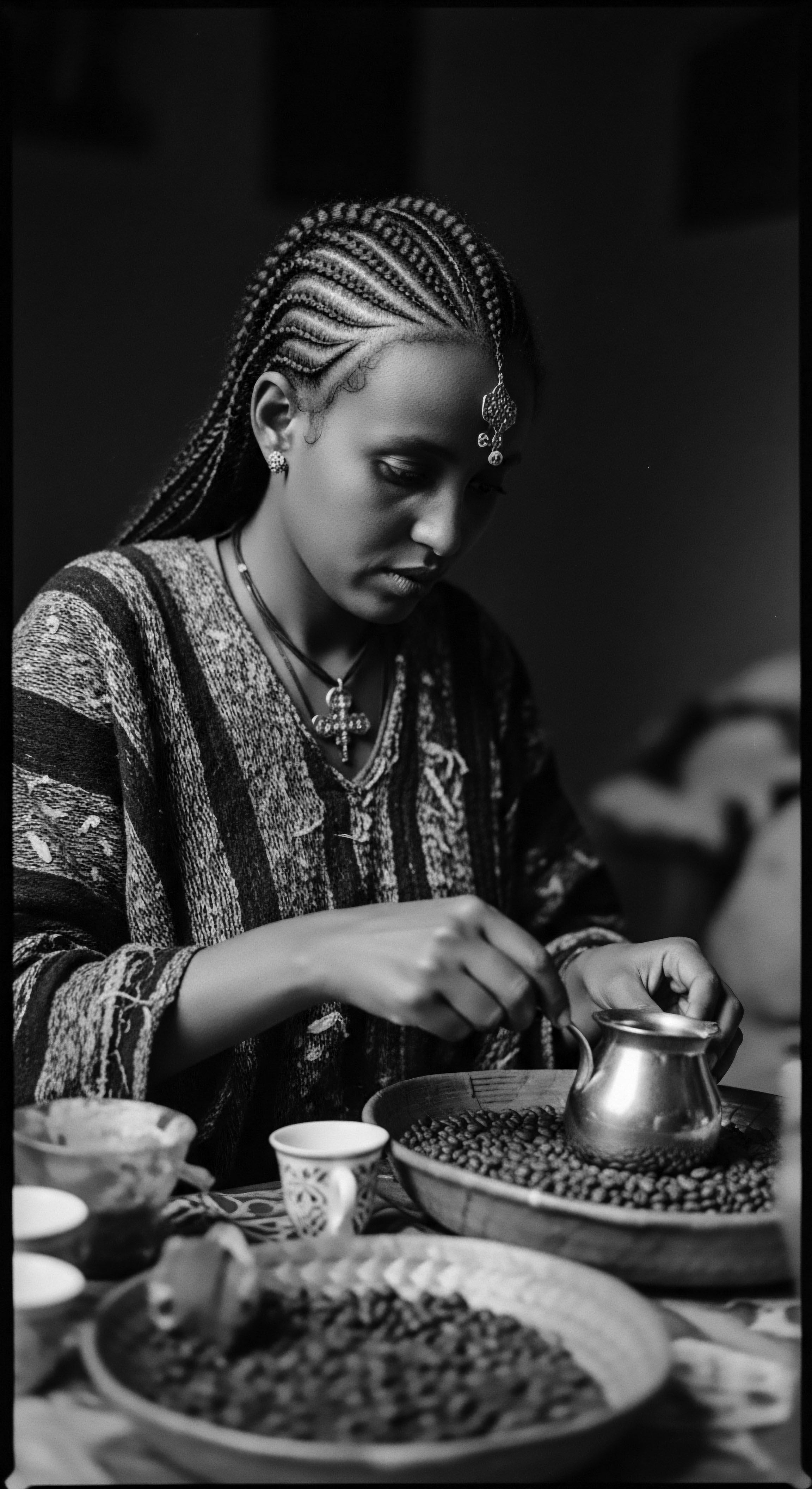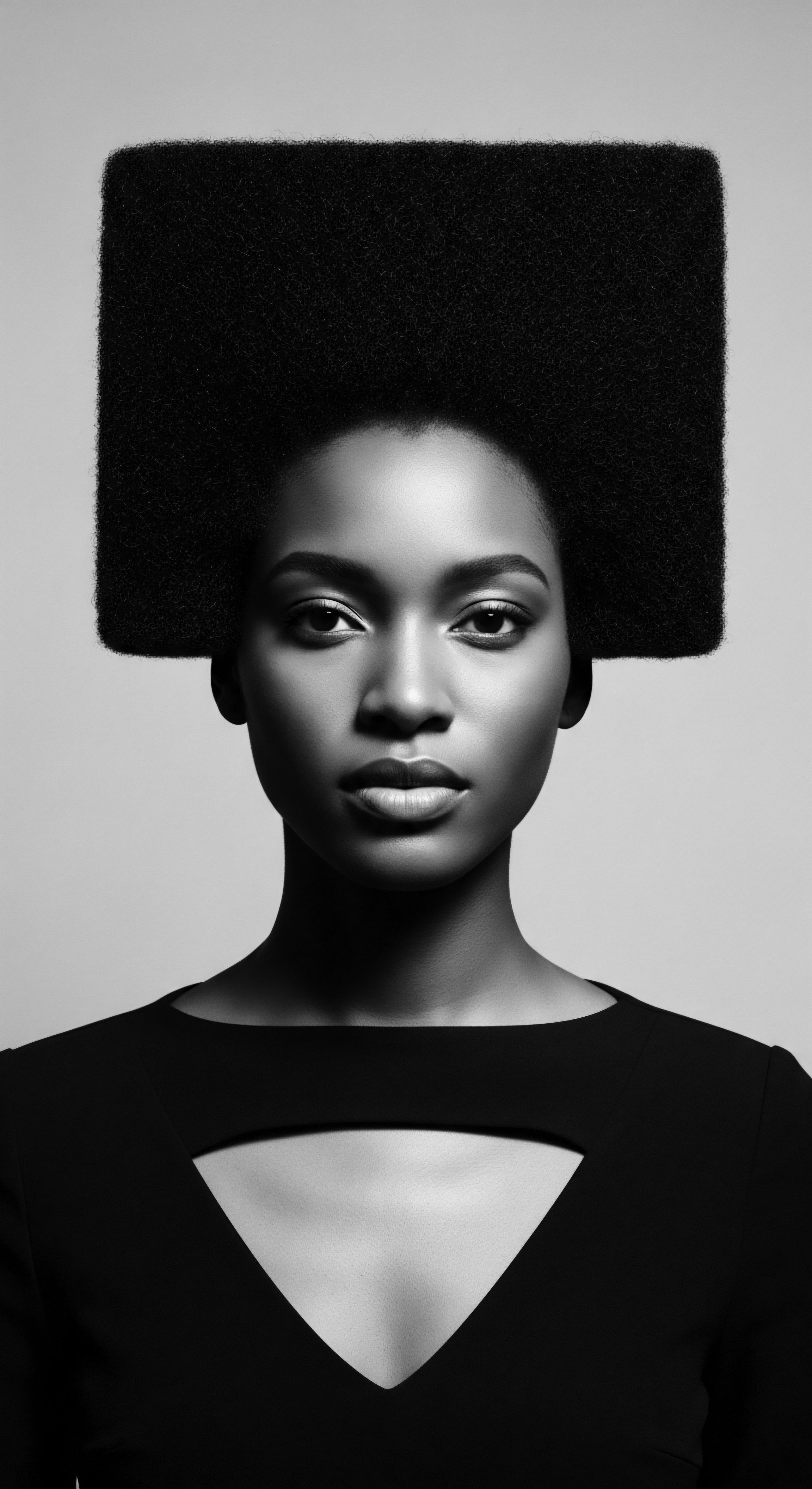
What historical practices improved textured hair strength?
Historical practices improved textured hair strength through natural oiling, protective styling, and holistic, communal care deeply rooted in ancestral heritage.

How do heritage methods affect textured hair moisture?
Ancestral methods inherently addressed textured hair moisture by shielding strands and applying natural emollients, a deep heritage of care.

In what ways do ancestral African hair care practices influence current textured hair routines?
Ancestral African hair care profoundly shapes current textured hair routines through shared practices of natural ingredient use, protective styling, and deep cultural reverence for hair's heritage.

Why do ancient hair care rituals offer a unique connection to textured hair lineage?
Ancient hair care rituals provide a profound connection to textured hair lineage by encoding ancestral wisdom, cultural identity, and enduring resilience.

What ancestral methods promoted textured hair vitality?
Ancestral methods promoted textured hair vitality through protective styling, nourishing ingredients, and holistic lifestyle practices rooted in heritage.

What traditional ingredients were used for textured hair vitality?
Traditional ingredients for textured hair vitality were natural plant-based oils, butters, herbs, and mineral clays, deeply rooted in ancestral heritage.

What ancient practices preserved textured hair vitality across cultures?
Ancient cultures preserved textured hair vitality through natural ingredients, protective styling, and communal care rooted in heritage.

Can ancient hair care rituals offer benefits for today’s textured strands?
Ancient hair care rituals rooted in heritage offer profound benefits for today's textured strands, validating ancestral wisdom through modern science.

In what ways did ancient hair practices communicate identity and heritage?
Ancient hair practices conveyed rich identity markers and heritage through intricate styles, rituals, and even silent acts of resistance.

What ancient hair care rituals continue to influence modern textured hair care?
Ancient hair care rituals, especially from African heritage, influence modern textured hair care through protective styling, natural ingredient use, and holistic wellness approaches.

How did hair communicate status in ancient African societies?
Ancient African hair communicated status through intricate styles, adornments, and communal rituals, reflecting deep textured hair heritage.

What traditional ingredients were essential for textured hair health?
Ancestral practices relied on natural oils, butters, and herbs to protect, moisturize, and strengthen textured hair, preserving its heritage.

Can ancient hair wisdom inform modern beauty practices for textured hair?
Ancient hair wisdom offers profound insights into modern textured hair practices by revealing enduring truths about its unique nature and cultural significance.

What cultural meanings did long textured hair hold in ancient communities?
Long textured hair in ancient communities served as a potent symbol of social standing, spiritual connection, and ancestral heritage.

Can ancient hair care methods deepen our connection to heritage?
Ancient hair care methods offer a profound reconnection to textured hair heritage by linking traditional practices to cultural identity and ancestral wisdom.

What historical examples show clay protecting textured hair from environmental dryness?
Historical examples show clay protecting textured hair from environmental dryness by forming a protective barrier and imparting minerals.

What natural ingredients were used for historical textured hair purification?
Ancestral communities purified textured hair using natural ingredients like clays and plant saponins, honoring cultural heritage and maintaining hair's intrinsic health.

What traditional applications of henna link to textured hair vitality?
Traditional henna applications link to textured hair vitality by strengthening strands, improving condition, and preserving ancestral hair care practices.

What ancient plant rituals protect textured hair from sun and city pollution?
Ancient plant rituals, utilizing botanicals like shea butter and amla, offered holistic protection for textured hair against sun and pollution, deeply rooted in cultural heritage.

How does historical hair care wisdom shape modern textured hair regimens?
Historical hair care wisdom offers foundational knowledge for modern textured hair regimens, deeply rooted in ancestral practices and heritage.

Garcinia Indica Use
Meaning ❉ This definition explores Garcinia Indica Use as a natural emollient, connecting its traditional Indian heritage to the ancestral care principles of textured hair.

Do current hair science studies support historical mineral use for textured hair?
Current hair science largely supports historical mineral use for textured hair, confirming ancestral wisdom's efficacy.

What natural ingredients did ancient communities use for textured hair care?
Ancient communities used plant oils, butters, clays, and herbal infusions from their local environments for textured hair care.

How do historical styling traditions connect to modern textured hair care?
Historical styling traditions connect to modern textured hair care through a continuous lineage of ancestral wisdom, resilient practices, and cultural identity.

What ancestral ingredients benefited textured hair health through eras?
Ancestral ingredients like shea butter and castor oil profoundly benefited textured hair health, deeply connecting care to cultural heritage through eras.

What ancient cleansing rituals involving minerals shaped hair heritage?
Ancient mineral cleansing rituals, using clays and ashes, shaped textured hair heritage by providing gentle, effective care.

